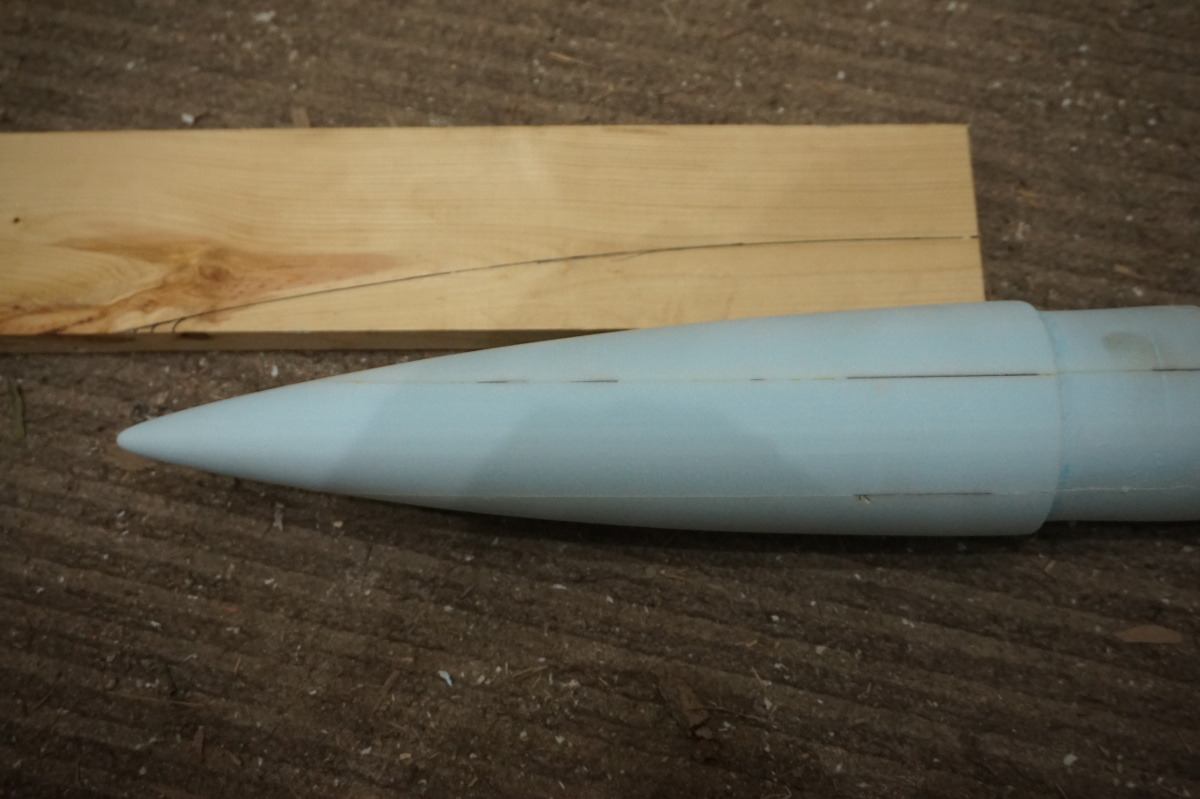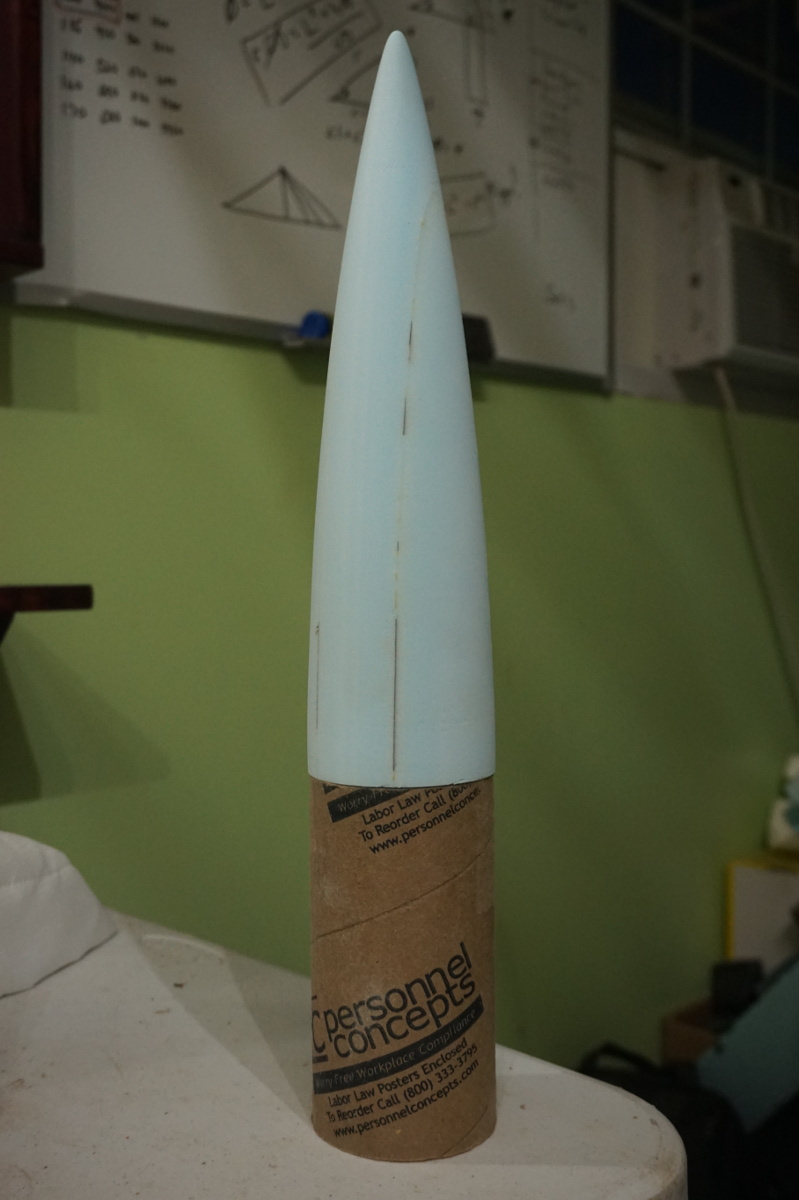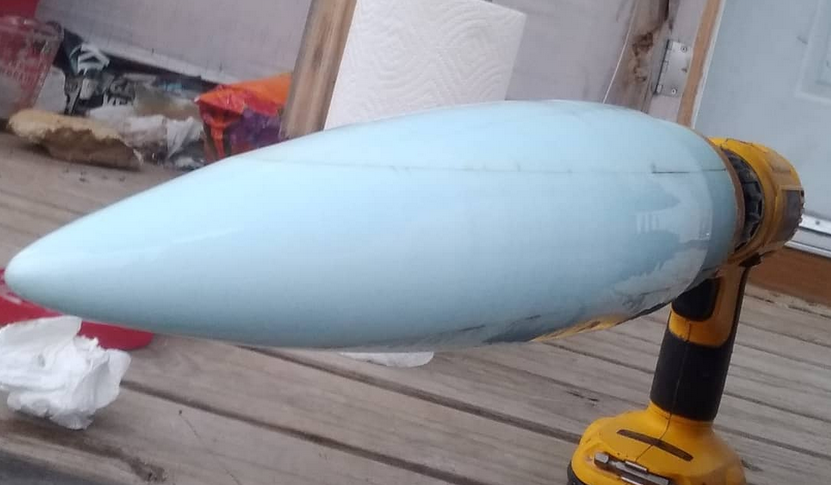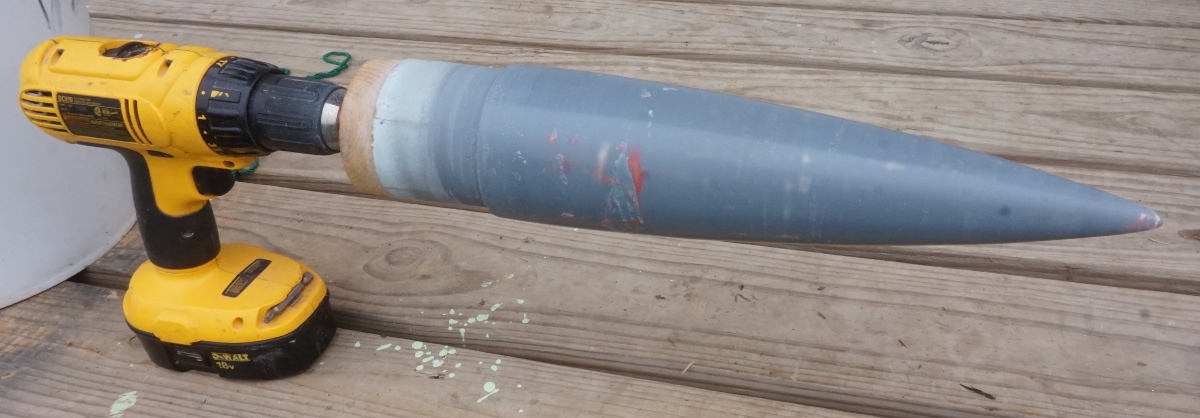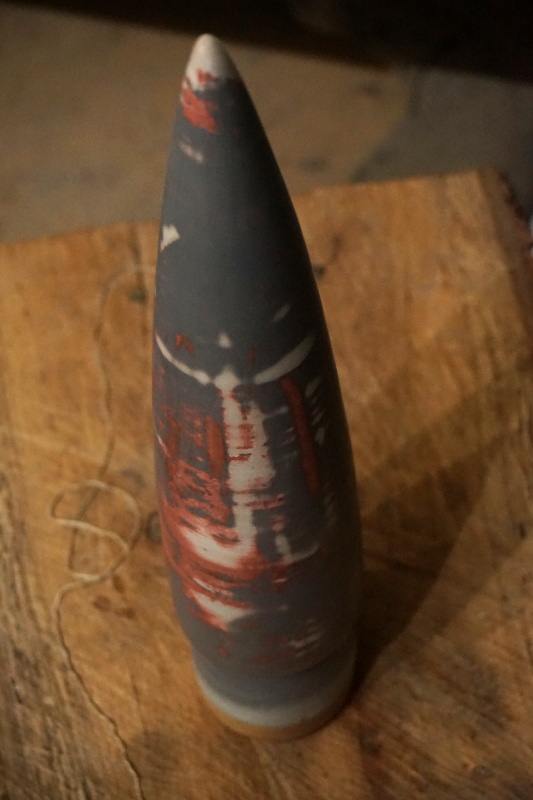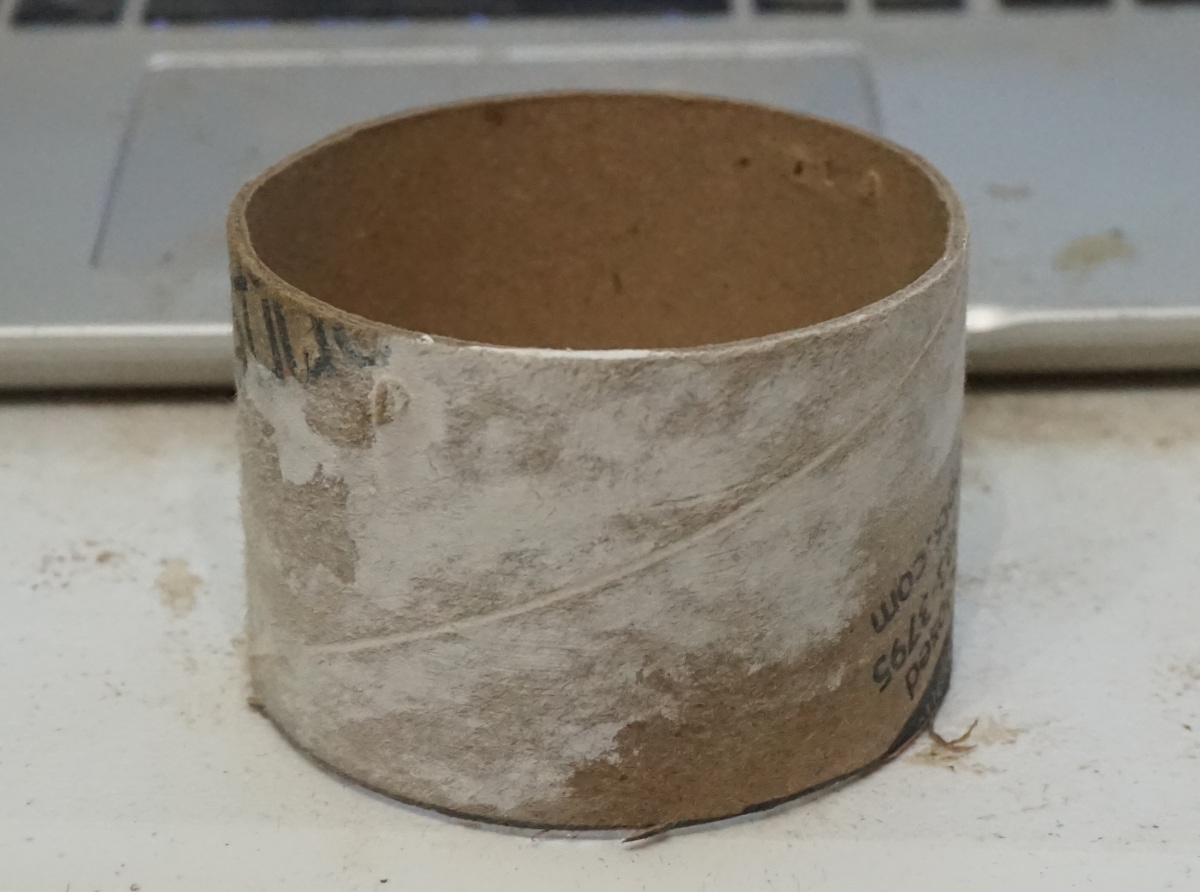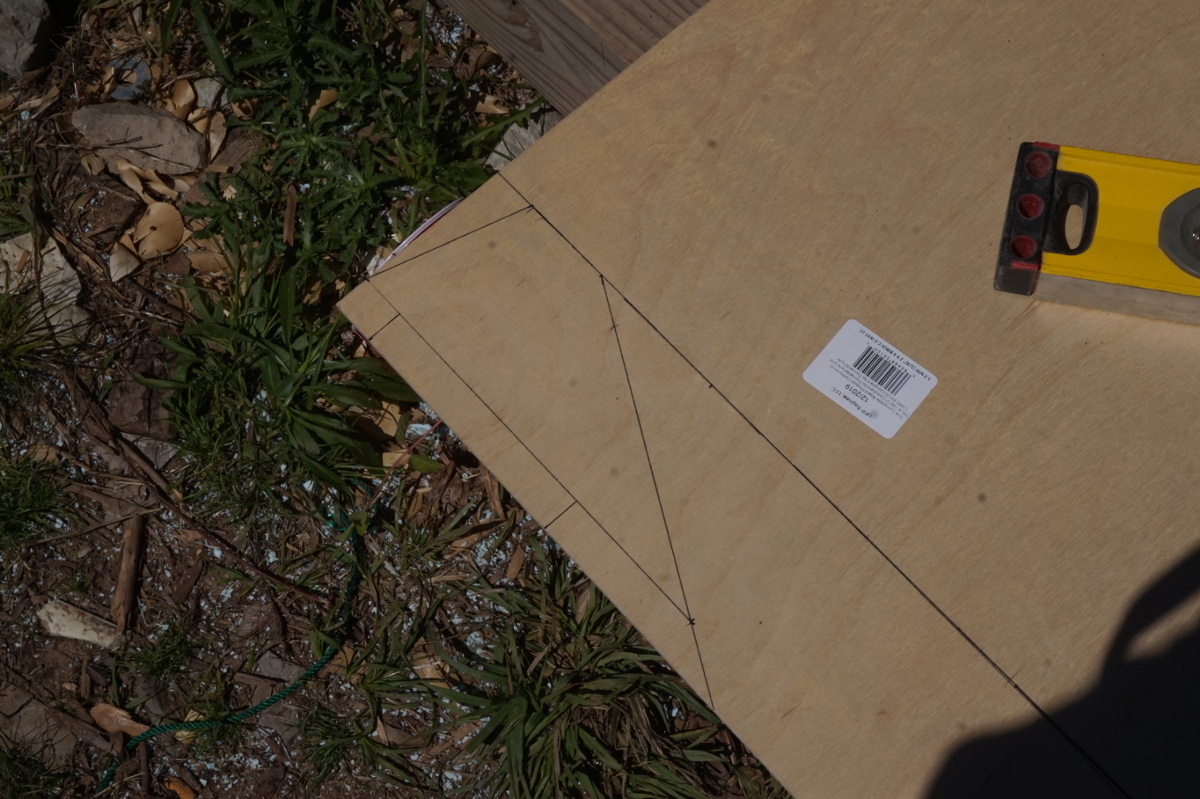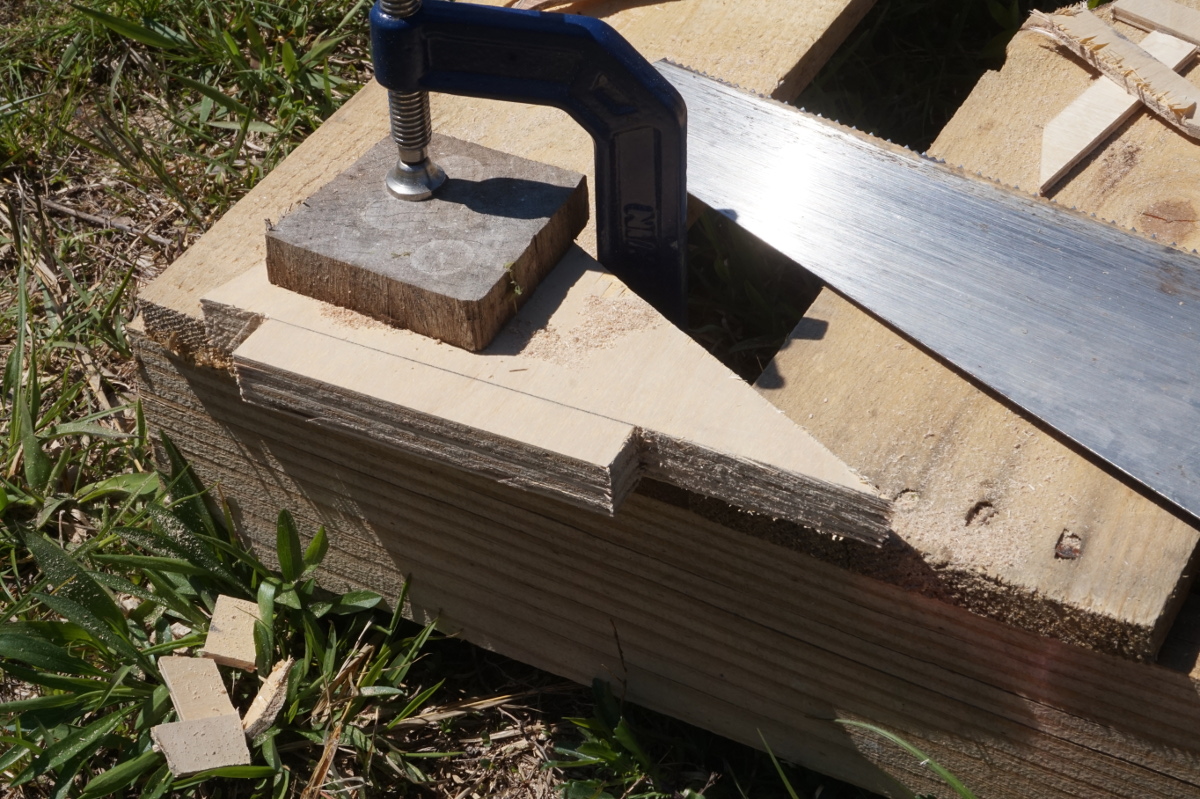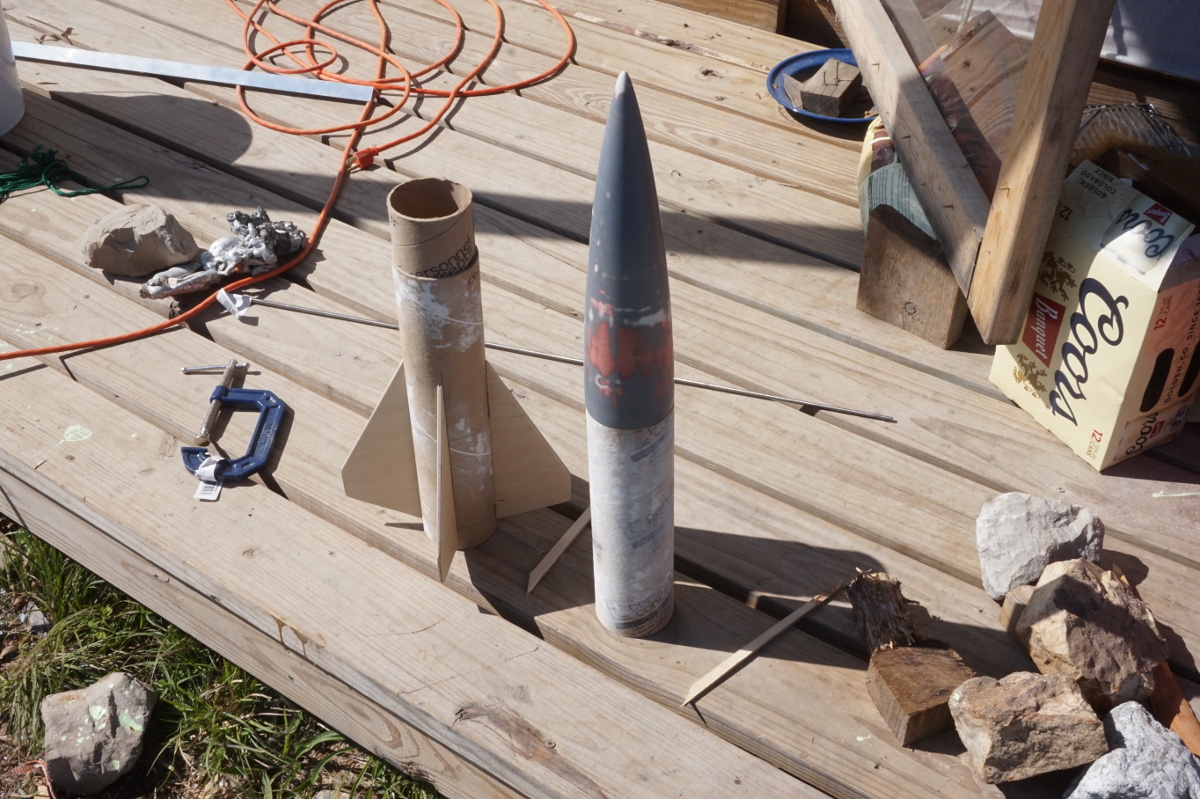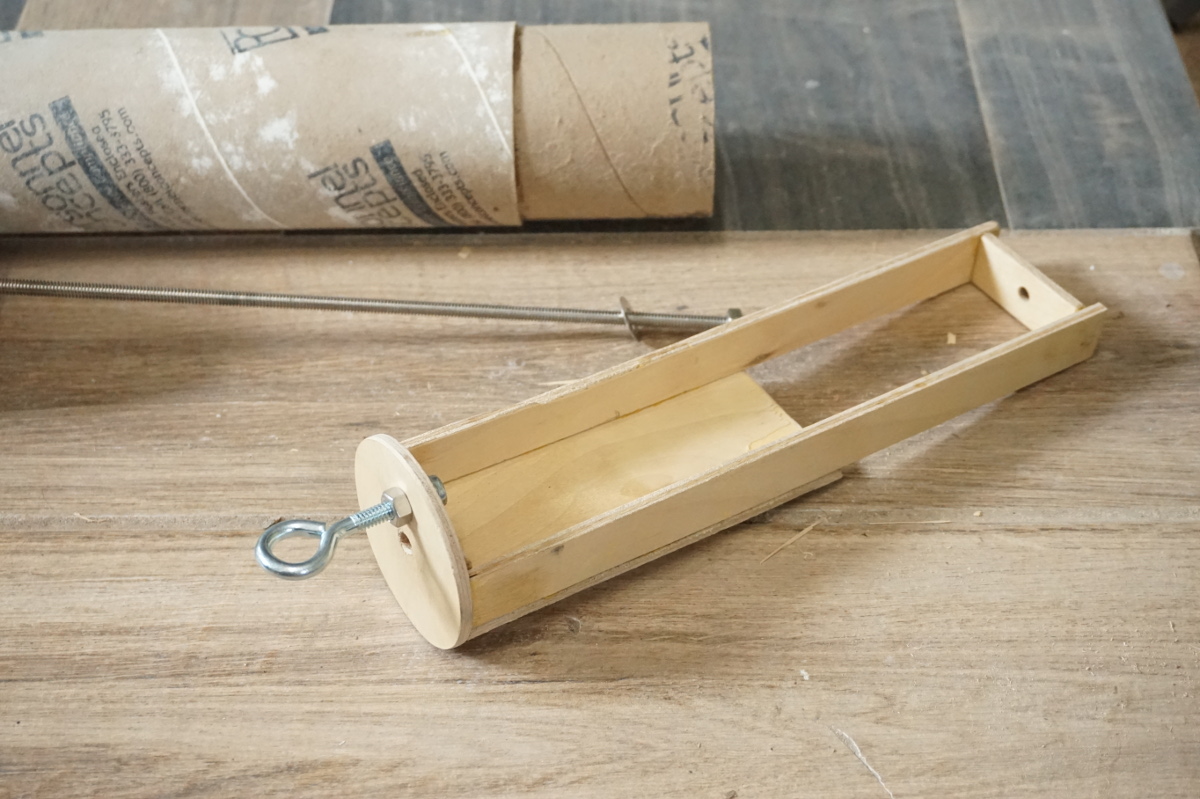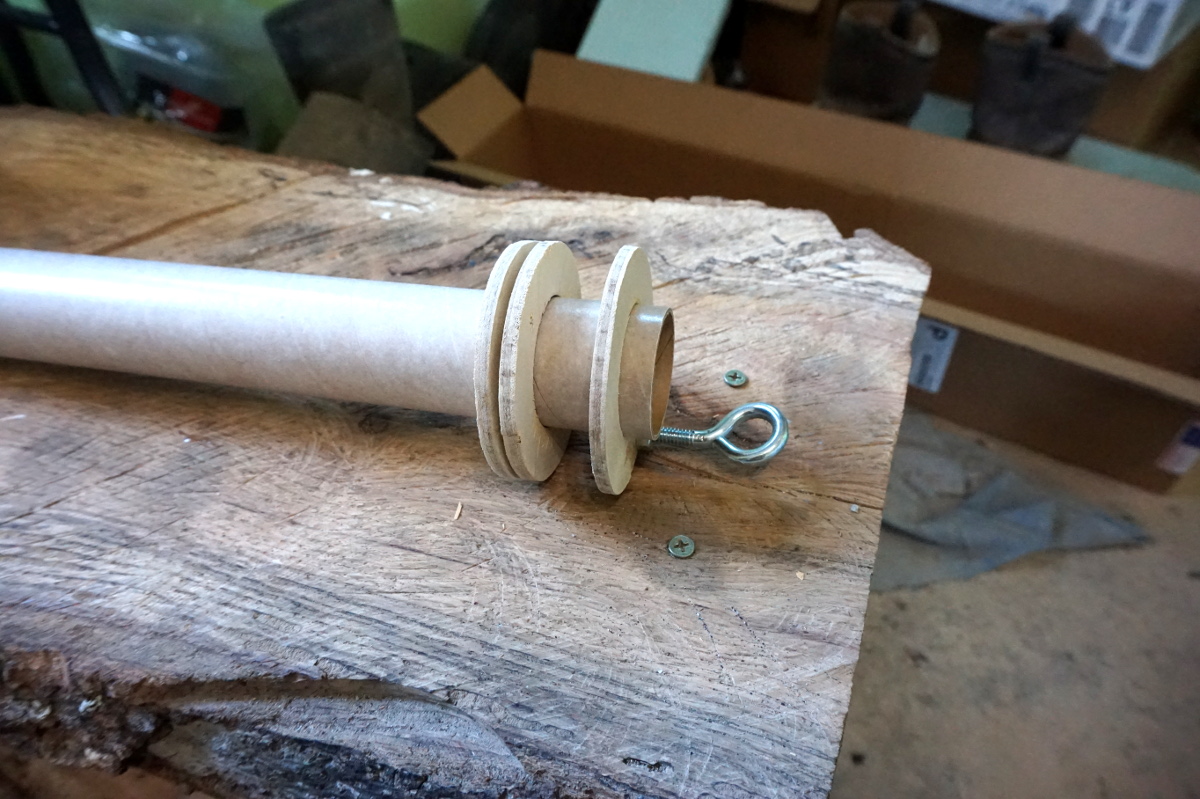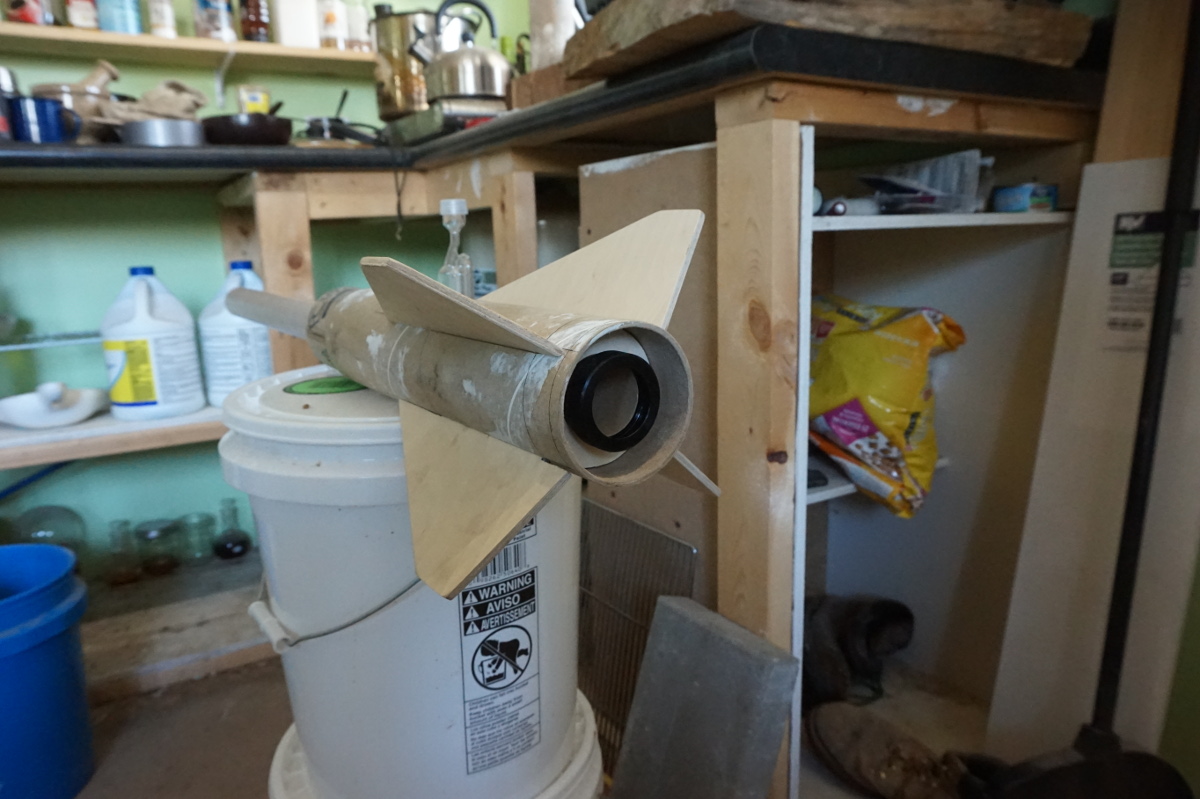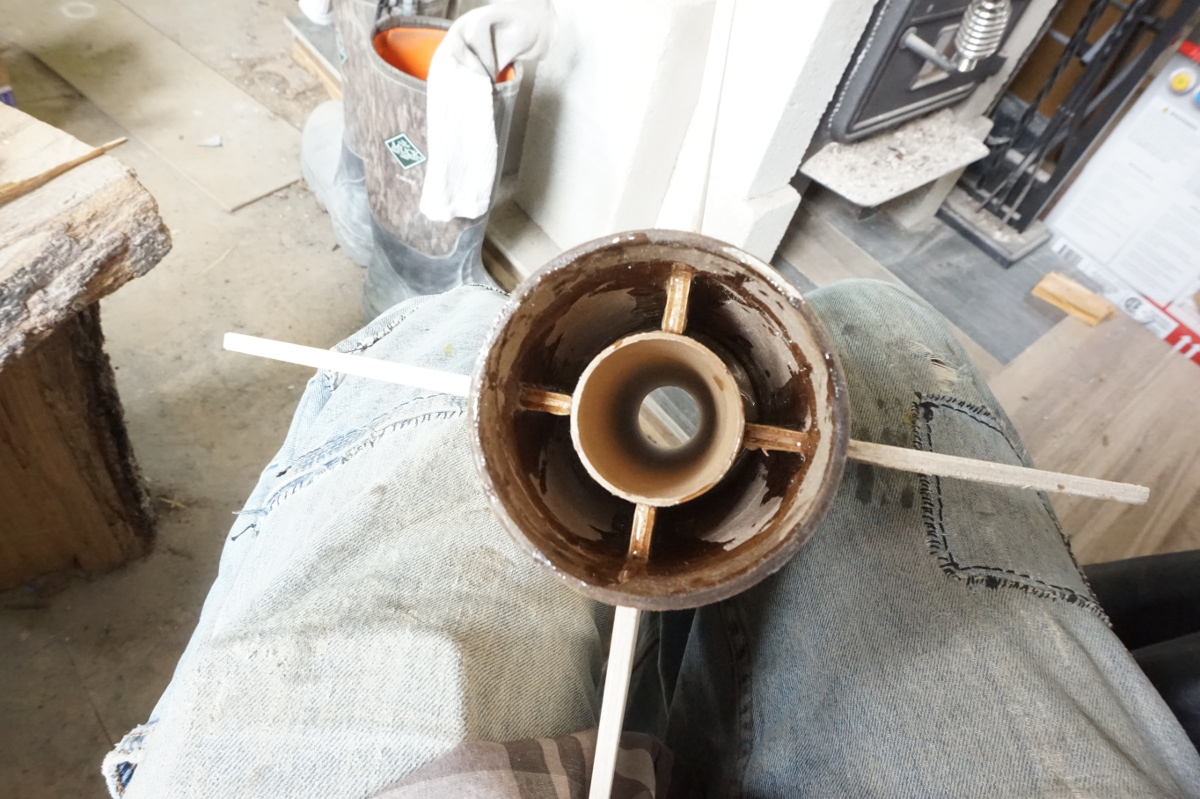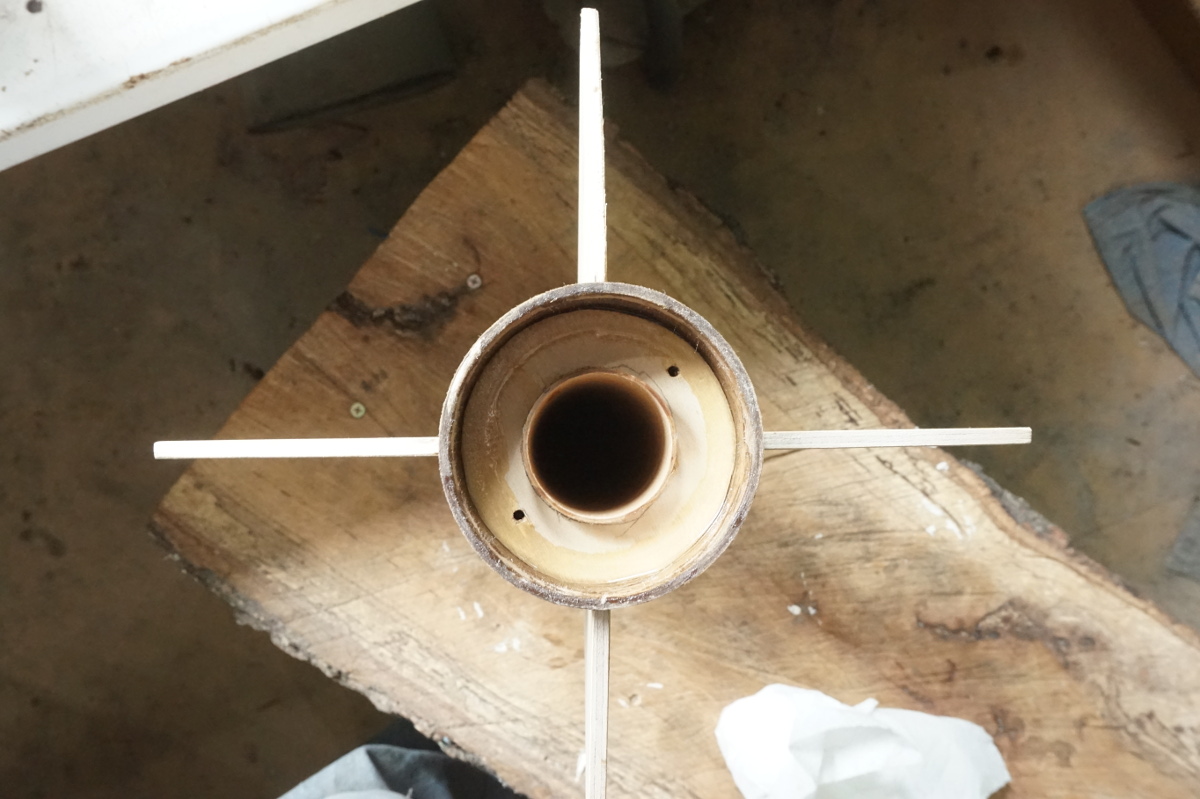Off Grid Gecko
Well-Known Member
Okay. I think I have most of the pieces and a few building skills developed. Turns out you lose a lot of build knowledge over the years. Had a heck of a time getting the shock cord mounted inside the tube of my little LPR build, so, being wiser now, I'll eliminate that problem before I come to it next time.
Moving on. I have the nose cone crafted from foam. It's a 3x13" ogive with a tip radius of around 1/8". My thinking is that a coat of 30 minute epoxy will be enough to fix the foam and give me a paintable surface. I'll be using Zap Z-poxy PT-39 for the coating. I don't have microballoons and I don't really want to fiberglass the cone. I was thinking about adding grog (cured ceramic powder) to the mix to make the surface more sandable. There is some precedent in the science journals I read, but I haven't seen this particular formulation used in hobby stuff by anyone. I've been told I will have issues sanding epoxy, so if anyone has input that would be great. I might study a few fiberglass cone layups for technique, but if I add cloth it will likely be cotton rather than glass, as I have plenty of that on hand.
My other thoughts lay on the motor assembly. I would ideally like to do a detachable fin can, as I can't stuff my meat hooks down a 3" tube. Wondering if there's a good way to go about this, or if I'd be creating more problems than I need, vs simply mounting the lower shock cord assembly and then permanently attaching the can via coupler to the main body tube.
While digging about, I found a 29mm motor tube that I was previously planning to use for a minimum diameter F-engine rocket, but that project has been scrapped. Since I have it, I'll go 29 on the motor assembly. I have .75" solid oak rounds cut for centering rings, and I'll be drilling the centers out of them to mate with the tube. I'd like to have a screw-in motor retainer. I remember making one before out of a gatorade bottle, but I'll likely purchase one for this build.
I plan on load testing the motor mount before flying (load testing everything actually) by suspending weights from a thrust ring. Since the max motor for this rocket should be in the I class, I'm trying to figure up the maximum thrust potential of the class. I'm coming up with a test weight of 110 lbs. That would be equivalent to 500N, which should be well over the max thrust this rocket will ever see, unless I've done my math wrong. Working out the numbers really makes you realize what a kick in the pants HPR motors deliver. Most likely, my L1 flight will be designed for 200N (likely somewhere between H90 and H180), so I might test at 60 pounds and then retest before launching larger motors in the rocket, but we'll see. That's a long way off.
The body will be constructed from mailing tubes. I have two sizes. Both are 3" ID, but one is thicker, so I'm thinking about using a piece of the thicker section for the fin can and motor mount, and running the thinner stuff for the main body to the nose cone. Both are quite thick and heavy so I don't forsee any airframe issues. They're quite stiff.
Lastly, this isn't going to be an overnight build. I started on the foam cone a week or so ago, and I plan one thinking through the build a little at a time, so perhaps months before it's ready for flight. By doing this, I'm trying to teach myself a bit more patience with this kind of thing. I have another LPR and an MPR to construct in the meantime that will fill in my desire to "fly something" until I get to the final stages of completion and testing. I might use regular 3-ply construction plywood (1/4") for the fins, as that is easiest to find for me and I'd rather not ship a sheet of plywood, but I'll see what the local lumber companies have available.
Thoughts? Comments? Suggestions? I know this isn't a ton of information to go on, but I don't have the final design frame complete, just a rough-out idea of the shape. 3" od, 60-80 inches OAL, and trapezoidal fins with a long lead-in and short termination. I'm also trying my best to keep the build simple. I'll be adding a payload section to tame down the motor with ballast for my L1 and possibly for mounting some experiments and camera hardware later on. It might be attached permanently to the nose cone.
Moving on. I have the nose cone crafted from foam. It's a 3x13" ogive with a tip radius of around 1/8". My thinking is that a coat of 30 minute epoxy will be enough to fix the foam and give me a paintable surface. I'll be using Zap Z-poxy PT-39 for the coating. I don't have microballoons and I don't really want to fiberglass the cone. I was thinking about adding grog (cured ceramic powder) to the mix to make the surface more sandable. There is some precedent in the science journals I read, but I haven't seen this particular formulation used in hobby stuff by anyone. I've been told I will have issues sanding epoxy, so if anyone has input that would be great. I might study a few fiberglass cone layups for technique, but if I add cloth it will likely be cotton rather than glass, as I have plenty of that on hand.
My other thoughts lay on the motor assembly. I would ideally like to do a detachable fin can, as I can't stuff my meat hooks down a 3" tube. Wondering if there's a good way to go about this, or if I'd be creating more problems than I need, vs simply mounting the lower shock cord assembly and then permanently attaching the can via coupler to the main body tube.
While digging about, I found a 29mm motor tube that I was previously planning to use for a minimum diameter F-engine rocket, but that project has been scrapped. Since I have it, I'll go 29 on the motor assembly. I have .75" solid oak rounds cut for centering rings, and I'll be drilling the centers out of them to mate with the tube. I'd like to have a screw-in motor retainer. I remember making one before out of a gatorade bottle, but I'll likely purchase one for this build.
I plan on load testing the motor mount before flying (load testing everything actually) by suspending weights from a thrust ring. Since the max motor for this rocket should be in the I class, I'm trying to figure up the maximum thrust potential of the class. I'm coming up with a test weight of 110 lbs. That would be equivalent to 500N, which should be well over the max thrust this rocket will ever see, unless I've done my math wrong. Working out the numbers really makes you realize what a kick in the pants HPR motors deliver. Most likely, my L1 flight will be designed for 200N (likely somewhere between H90 and H180), so I might test at 60 pounds and then retest before launching larger motors in the rocket, but we'll see. That's a long way off.
The body will be constructed from mailing tubes. I have two sizes. Both are 3" ID, but one is thicker, so I'm thinking about using a piece of the thicker section for the fin can and motor mount, and running the thinner stuff for the main body to the nose cone. Both are quite thick and heavy so I don't forsee any airframe issues. They're quite stiff.
Lastly, this isn't going to be an overnight build. I started on the foam cone a week or so ago, and I plan one thinking through the build a little at a time, so perhaps months before it's ready for flight. By doing this, I'm trying to teach myself a bit more patience with this kind of thing. I have another LPR and an MPR to construct in the meantime that will fill in my desire to "fly something" until I get to the final stages of completion and testing. I might use regular 3-ply construction plywood (1/4") for the fins, as that is easiest to find for me and I'd rather not ship a sheet of plywood, but I'll see what the local lumber companies have available.
Thoughts? Comments? Suggestions? I know this isn't a ton of information to go on, but I don't have the final design frame complete, just a rough-out idea of the shape. 3" od, 60-80 inches OAL, and trapezoidal fins with a long lead-in and short termination. I'm also trying my best to keep the build simple. I'll be adding a payload section to tame down the motor with ballast for my L1 and possibly for mounting some experiments and camera hardware later on. It might be attached permanently to the nose cone.




